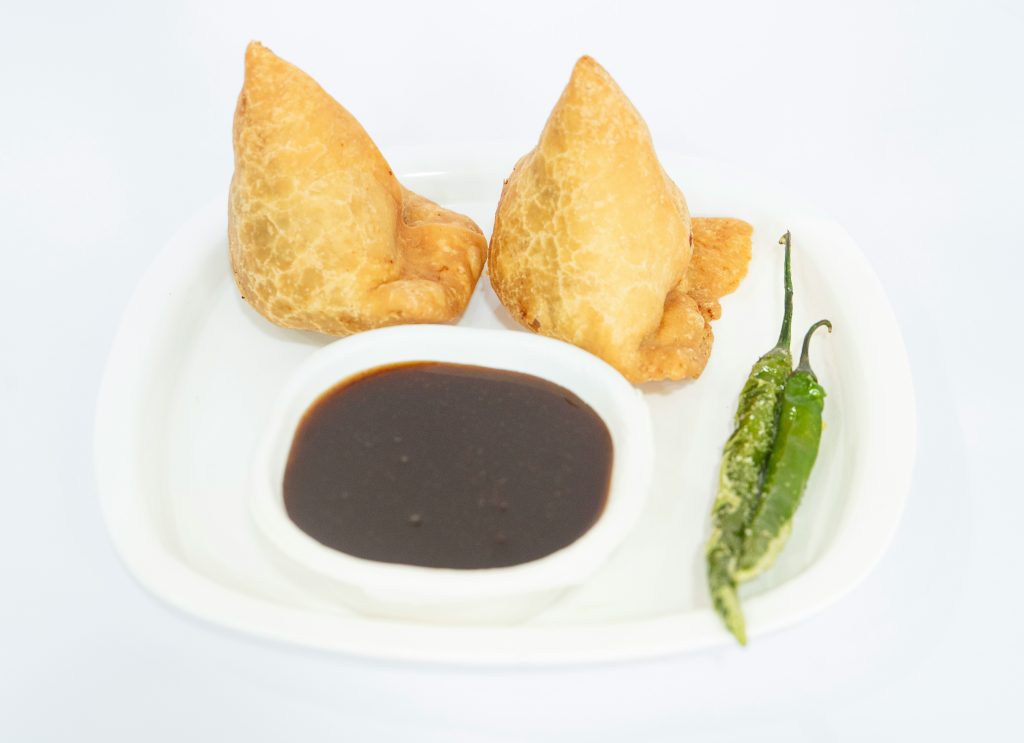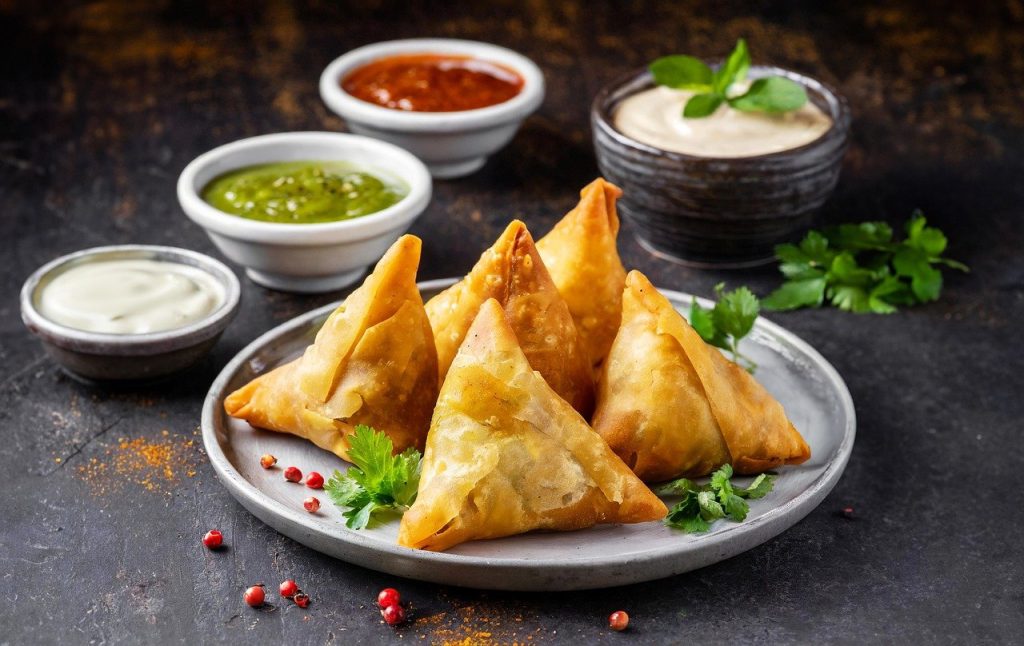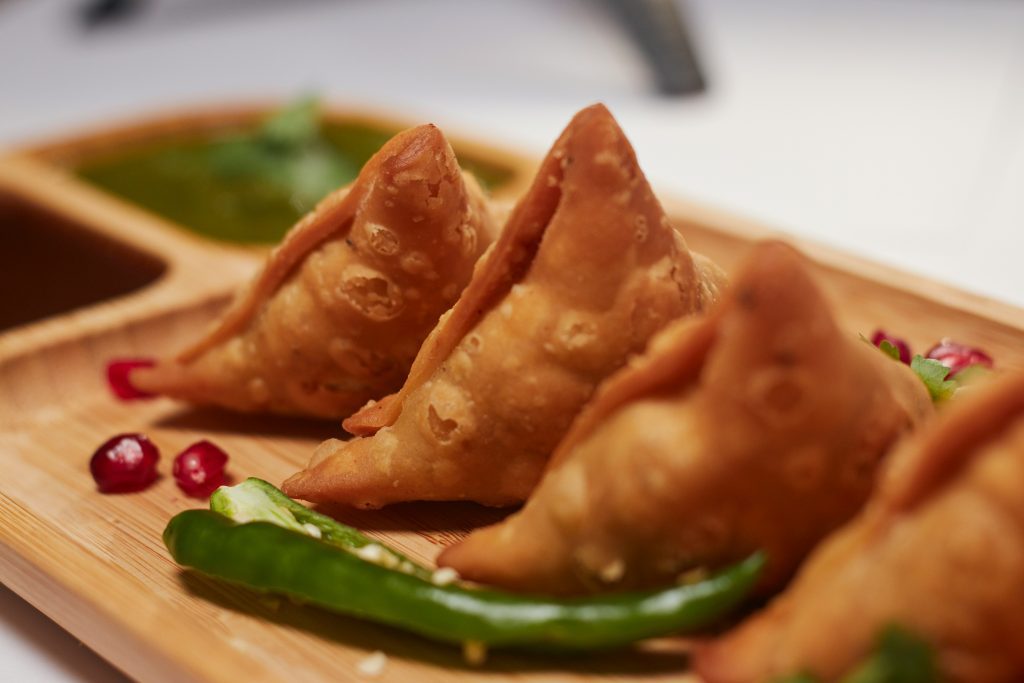Learn about How Many Calories Are in a Vegetable Samosa. Explore the calorie content of vegetable samosas, their nutritional value, and tips for healthier preparation methods to enjoy this delicious snack.
Introduction
Vegetable Samosas are light crispy snacks that have been welcomed as appetizers in many communities more so in South Asia. They are catered for by way of baked or deep-fried special dough known as a samosa that is filled with a specially made healthy paste from vegetables. Further, although this is one of those many appetizing delicacies, care must be taken while eating them since they are highly calorific, which makes knowing their nutritional value very important to someone who is watching their food intake.
What is Vegetable Samosa?
Veggie Samosa is a popular snack across the Indian subcontinent. It is a crispy triangular shell filled with spicy vegetables. The most commonly used filling ingredients are potatoes, peas, and carrots, especially spices like cumin, coriander, and garam masala which give the fillings their flavor. The outer coating is generally prepared from wheat flour and the inner coating can be either roasted or baked to give a crisp golden crust on the outside.

Hot fried, vegetable samosas are usually served with different chutneys like mint or tamarind Chutney to improve taste. They are highly preferred as street food and are also served as starters or snacks at functions and events hence appealing to vegetarians who enjoy spicy comfort food.
What is Calories?
Calories refer to a measure of energy contained in food and drinks consumed by an individual and thus averagely used up by the person. They are crucial for maintaining the normal physiological functions of the body including the various types of metabolism, physical exercise, and wellbeing in general. About dietary issues, the term calorie is composed of three important macronutrients that are carbohydrates, proteins, and fats. There are approximately 4 calories in every gram of carbohydrate and protein, whereas a single gram of fat gives about 9 calories.
The overall comfortably bearable caloric scope required in any single day varies from one person to the next due to age, sex, weight, and activity level as well as weight history or health objectives. It is important to consume and expend calories according to a certain balance when managing weight because if one takes too many calories than one spends, one gains; and gains one takes too few, one may not only lose weight but also develop deficiencies in some nutrients. Knowing about calories allows people to understand healthy eating better.
How Many Calories Are in a Vegetable Samosa?
The nutritional value of a vegetable samosa varies greatly depending on several factors like size, contents, and even the style of preparation. For instance, a standard medium-sized vegetarian samosa (100g) may range anywhere between 120 – 200 calories. The outer covering made of refined flour is calorie-dense and adds most of the calories so that the fried variants are more caloric because it absorbs a lot of oil.
The filling inside, which is typically a combination of flavored potatoes, peas, and a few other veggies, provides extra calories usually between 50 to 100 calories per samosa. Baked samosas are less calorie-dense as compared to fried samosas, making the former the healthier choice. This is also important since it helps a person enjoy this snack without excesses particularly those who are watching their calorie intakes.
Many Benefits of Eating Delicious Samosa
Aside from the heavenly taste that comes with eating delicious Samosa, there are many advantages that one enjoys. For example, since they are rich in carbohydrates, they are effective in offering quick energy, thus making them more appropriate for appetizing snacking. Moreover, the spice mixture serves the purpose of both ensuring a great taste and health benefits such as anti-inflammatory, and digestive benefits. Samosas, on the other hand, can encourage social interaction as they are often shared during gatherings providing easy ways of enjoying other people.
A Cultural Experience at Your Doorstep
Samosa stands for a traditional snack of South Asian origins and is an ethnographic representation of cultural history. Learning to eat samosa brings out love and respect towards various kitchens as different guests’ cultures are cuisines change. Samosa, whether made at home or taken from the street corner restaurants brings back several memories of places and times full of flavor cuisine and traditions drenched in years of rich history.
Nutritional Value of Vegetable Samosas
Samosa offers calories and in addition to that nutrition can still be found even in the case of vegetable Samosa. The vitamins (for example, vitamins A and C) plus fiber from the filling vegetables can only be of help but for fried types, they may benefit low.
1. Carbohydrates
Samosa calorie breakdown reveals that most of the calories in this snack are derived from carbohydrates with the majority being attributed to the potato and the pastry.
2. Fats
The frying oil increases the fat content significantly which can vary from 10 to 20 g of fat per samosa.
3. Protein
However, samosas do not have a high protein content but small amounts can be contributed from peas and other legumes which is usually around 2-5 grams.
Diverse Flavour Explorations
Samosas are quite adaptable by all means and one can fill them with a few or many ingredients starting from the traditional potato and peas mash to creative stuffing such as paneer, lentils, or cheese. It has an advantage where the fillings allow for quite several explorations in taste making them suitable for different tastes and dietary needs. Adding spices and combining various ingredients can produce new twists that fit different types of tastes.
Perfect for All Occasions
Samosas are acceptable everywhere, be it at parties, festivals, or even in simple social gatherings. The nature of these snacks makes them easy to carry with oneself and serve at the same time making it fit to either classy events or relaxed ones. They also encourage the use of other sauces to them like mint chutney or tamarind sauce so that the enjoyment is increased. In other terms, Samosas can be taken as appetizers, main meals, or even snacks hence suiting any appropriate moment.
Ideal Vegetarian Options
Vegetarians will be pleased to munch on samosad extending healthy fillings within the dough. Including potatoes or peas within orthodox regions where fillings are invasive for any reason would easily be acceptable. They can also provide proteins and other nutrients when one uses pureed beans or other appropriate fillings.
Bottom Line
Samosas are not only delicious, but they also have cultural importance, and health benefits, and can be consumed on many occasions. Of course, one has to be careful not to overindulge, but with their unique tastes and the hunger they can supplant, these can become an integral part of any meal or occasion. Relish the pleasure of chomping on these delicious morsels in your quest to appreciate the art of cuisine they come along with.

Considerations for Healthier Choices
If you’re looking to enjoy vegetable samosas while being mindful of your calorie intake, consider the following tips:
Baked Instead of Fried
Choosing baked over fried pulav samosa can bring down the calories immensely. It can be attributed to less oil being used in baking giving it a light snack enabling the users to enjoy the great taste. Moreover, the cooking technique helps preserve the ingredients used therefore it is the healthiest option available.
Portion Control
Portion control is an important factor in regulating caloric intake. For instance, having smaller portions or sickness samosas as would be done when with a group can help satisfy one’s crank without much excess. It becomes possible to consume this baked treat without increasing the overall calories consumed, thus maintaining of healthy diet.
Homemade Samosas
Homemade samosa recipes allow complete control over the components and the processes of cooking. Healthier fillings can be used, oil content can be lowered and one can try baking rather than frying. Also, one can make different flavored samosas with different nutritional values, making it even more convenient to make a healthy version of the savory snack.
Caloric Breakdown
1. Pastry Shell
The pastry casing of the samosa is made from maida flour which has about 350 calories in hundred grams. A single samosa uses approximately 30 grams of this pastry, which is estimated to contain calories worth 105. This brings pastries to be one of the most outstanding constituents of the calorie content within a samosa.
2. Vegetable Filling
The vegetable stuffing used in the making of samosa stuffing is a mixture of vegetables as well as spices that enhance the flavor and nutrition. A serving of such mixture weighing around fifty grams provides twenty-five to thirty calories. Potatoes which are one of the heavy fillers’ constituents have a soggy density and calories of another seventy-seven out of a hundred grams thereby elevating the calorific density.
3. Oil for Frying
Deep frying greatly adds to the calories of samosas. On deep-frying, a single samosa absorbs oil weighing around fifteen to twenty-five grams which translates to about one hundred and thirty-five to two hundred and twenty-five calories. The oil used and how samosas are cooked also contributed to the total calories rendering fried samosas high-calorie snacks.

FAQs
Are baked samosas healthier than fried ones?
Of course, samosas that are cooked in the oven are healthier than those that are deep-fried. Matron using an oven will bake off or bake it in the oven will use an appreciably small quantity of oil which means low calories and less fat content without compromising on the taste.
What factors affect the calorie count of a samosa?
The calorie content is dependent on many factors including the ingredients used, the type of pastry, the amount of oil that gets soaked during frying, size of the samosa, among many others. Also, in this case, other types of samosas that are made at home do not have the same caloric content.
Can I reduce the calories in a vegetable samosa?
Baked samosas reduce calories, eating less or controlling your portions, and making them at home includes healthier cooking techniques or ingredients such as less oil and more vegetables in the filling.
How can I estimate the calories in a homemade vegetable samosa?
In the first place, to assess the calories in a home-prepared vegetable-filled pastry, calculate the calories in all the elements of the egg, stuffing, and oil of the samosa and then, total divide it by the number of samosas made and find the calorie count for each one.
Conclusion
The contents of the calorie vegetable samosas are very important when it comes to the eating habits of a person. The calorie content of an ordinary samosa starts at about a hundred and may go as high as four hundred depending on the cooking method. Such measures as going for baked, controlling the portion sizes, and making the products themselves will enable the consumer to restrain their appetite for this great snack. In the end, it is all about balance in the intake of healthy foods and treating oneself to samosas now and then without putting one’s health goals at risk.
